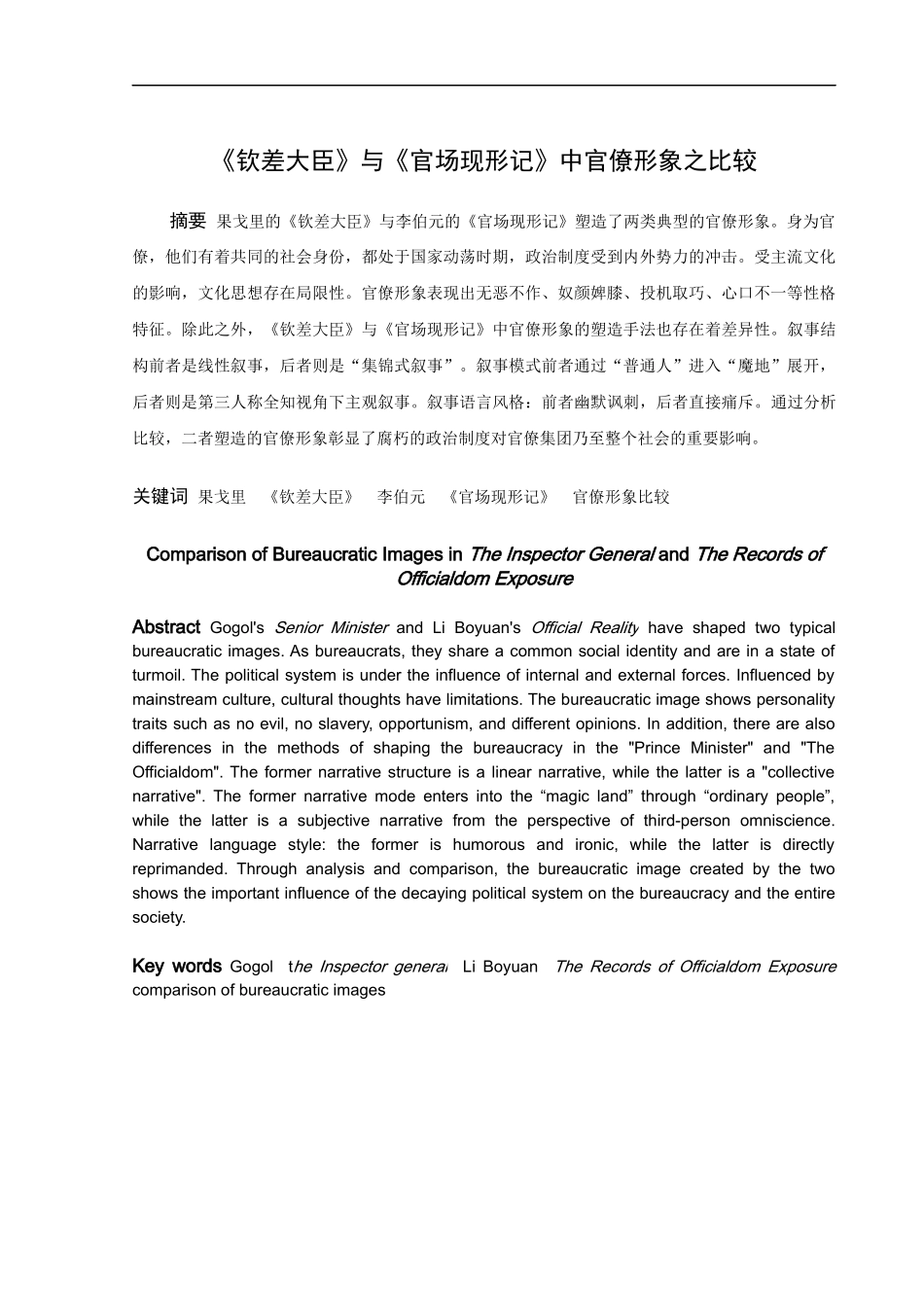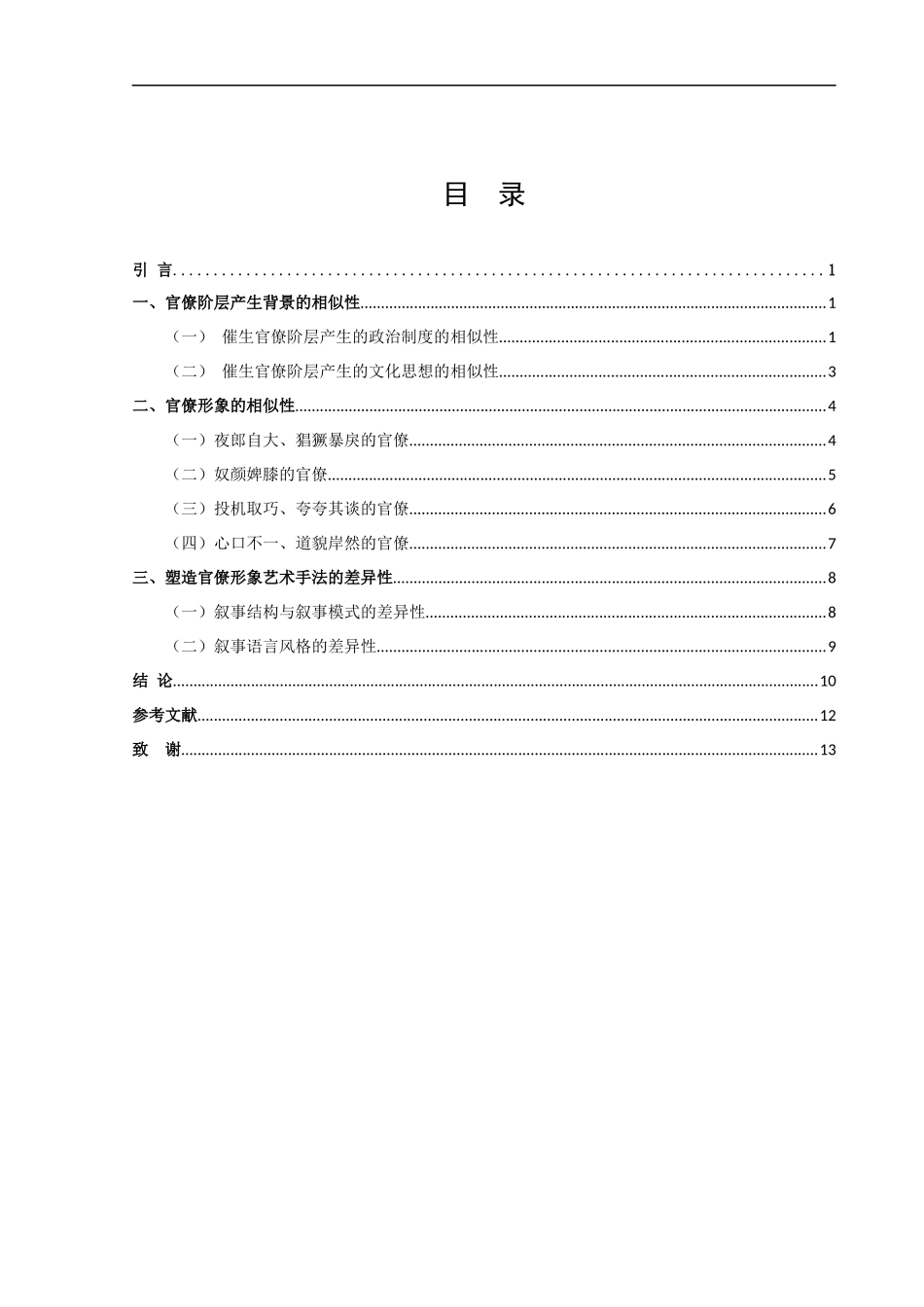《钦差大臣》与《官场现形记》中官僚形象之比较摘要 果戈里的《钦差大臣》与李伯元的《官场现形记》塑造了两类典型的官僚形象。身为官僚,他们有着共同的社会身份,都处于国家动荡时期,政治制度受到内外势力的冲击。受主流文化的影响,文化思想存在局限性。官僚形象表现出无恶不作、奴颜婢膝、投机取巧、心口不一等性格特征。除此之外,《钦差大臣》与《官场现形记》中官僚形象的塑造手法也存在着差异性。叙事结构前者是线性叙事,后者则是“集锦式叙事”。叙事模式前者通过“普通人”进入“魔地”展开,后者则是第三人称全知视角下主观叙事。叙事语言风格:前者幽默讽刺,后者直接痛斥。通过分析比较,二者塑造的官僚形象彰显了腐朽的政治制度对官僚集团乃至整个社会的重要影响。关键词 果戈里 《钦差大臣》 李伯元 《官场现形记》 官僚形象比较Comparison of Bureaucratic Images in The Inspector General and The Records of Officialdom ExposureAbstract Gogol's Senior Minister and Li Boyuan's Official Reality have shaped two typical bureaucratic images. As bureaucrats, they share a common social identity and are in a state of turmoil. The political system is under the influence of internal and external forces. Influenced by mainstream culture, cultural thoughts have limitations. The bureaucratic image shows personality traits such as no evil, no slavery, opportunism, and different opinions. In addition, there are also differences in the methods of shaping the bureaucracy in the "Prince Minister" and "The Officialdom". The former narrative structure is a linear narrative, while the latter is a "collective narrative". The former narrative mode enters into the “magic land” through “ordinary people”, while the latter is a subjective narrative from the perspective of third-person omniscience. Narrative language style: the former is humorous and ironic, while the latter is directly reprimanded. Through analysis and comparison, the bureaucratic image created by th...












